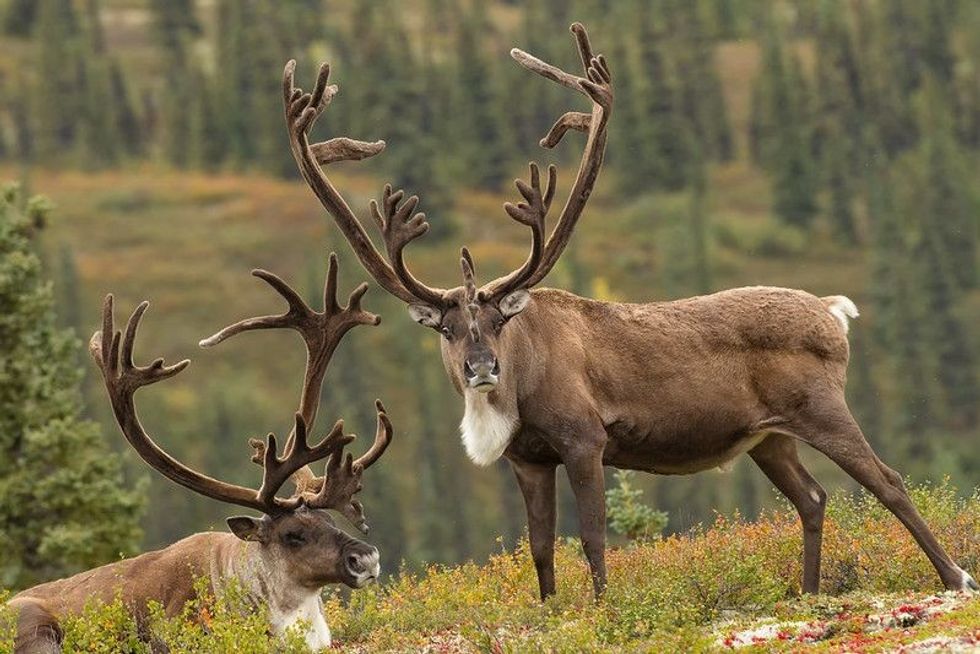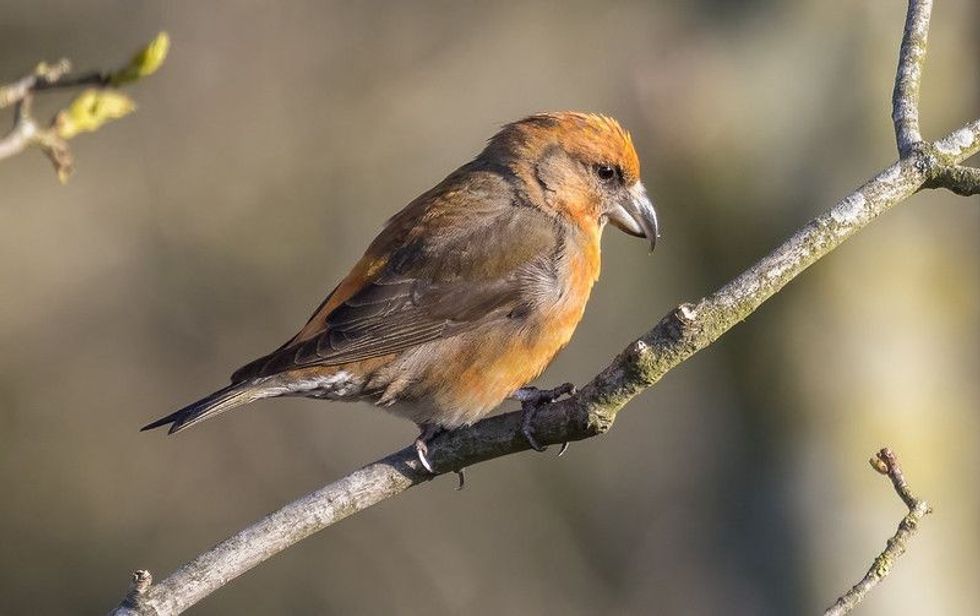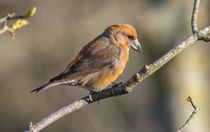Top Animals In The Taiga: What Wildlife Lives In The Boreal Forest?
The taiga or the boreal forest is the largest land biome in the world, stretching between the tundra and deciduous forests in the south across Canada in North America, Europe, and Asia.
The taiga is home to several insects, birds, mammals, and reptiles. While the summer in the taiga is warmer with temperatures rising to 68 F (20 C), the temperature falls to around -58 F (-50 C) in the winter, leading to wide-scale migration of species found in the taiga biome.
The taiga region is covered with coniferous and deciduous trees.
More than 32,000 species of insects, 130 species of fish, 85 species of mammals, and several species of birds and reptiles are found living in the taiga.
Some animals of the taiga are mammals like elk, roe deer, wood bison, the beaver, the North American porcupine, the snowshoe hare, the mountain hare, the Canada lynx, the Siberian weasel, the Siberian tiger, the brown bear, moose, caribou, and the Eurasian lynx.
Fish are also found in the taiga region, including the Alaska blackfish, the walleye, the northern pike, the white sucker, the longnose sucker, the lake whitefish, and chum salmon.
Reptiles such as the common European adder, the Siberian salamander, the northern leopard frog, the red-sided garter snake, the blue-spotted salamander, and the northern two-lined salamander are also found in the taiga region.
There are also birds, for example, the Siberian thrush, the black-throated green warbler, the white-throated sparrow, the golden eagle, the raven, the rough-legged buzzard, the crossbill, and the grouse.
Also, there are several Endangered animals in the taiga biome.
The taiga biome ranges over 3,600 mi (5,794 km) and was covered in glaciers during the ice age. The layer beneath the taiga region is permanently frozen soil.
It is covered with thick forests having coniferous and deciduous trees such as oak, birch, alder, pine, spruce, and fir. The floor is covered with plants such as mushrooms, lichens, flowers, and mosses rather than shrubs.
The ecosystem of the area is primarily threatened due to human activities and climate change. Animals that live in the taiga such as wolves, bears, and moose are being hunted for fur, skin, and horns.
Civilization is leading to deforestation to build homes, industries, and schools. Wood is exported for producing paper, cardboard, and furniture in Canada and Eurasia as it is of significant economic importance.
Further, clearcutting the designated area is destroying habitats for several species, threatening their existence.
Climate change has several drastic effects on the environment. Firstly, the warming temperature thaws the permafrost with no place for the water to drain which is turning the taiga into muskegs with limited trees.
Secondly, the rapid climate change is initiating a sudden urge for species to migrate as several species are not adapted to high temperatures. Also, several such changes in the environment are leading to the destruction of the ecosystem in the taiga.
If you enjoy this article, why not also read about animals in the Arctic and animals that live in the forest here on Kidadl?
Location And Climate Of The Taiga
The taiga biome is located in the cold subarctic region in the Northern Hemisphere between the tundra and deciduous forests in the south. It primarily covers North America and Eurasia.
Specifically, the taiga spans Alaska, Canada, Japan, Kazakhstan, Mongolia, Russia, Scandinavia, Scotland, and the continental United States of North America.
Also, some large cities like Anchorage, Arkhangelsk, Luleå, Murmansk, Oulu, Tromsø, Yakutsk, and Yellowknife are now situated within the largest biome of the world.
Since the climate of the taiga makes it hard for a great diversity of species to inhabit it, species living in the taiga are well adapted to the extreme cold weather, especially in the winter season. The temperature in the taiga ranges between -58-68 F (-50-20 C).
The temperature in the summer rises to 68 F (20 C), whereas the temperature falls to -58 F (-50 C) in the winter season. The summer season lasts for over four months and the remaining months experience an extremely cold winter season in the taiga.
Some defined areas in the taiga are known to have midnight sun in the mid-summer and polar nights in the middle of the dark winter.
The growing season is often referred to as the period of frost-free days that usually lasts for around 140 days. Rainfall, snow, and fog are relatively low throughout the year.
It rains during the summer months. Snow covers the ground for a relatively long period, ranging up to nine months.
The taiga biome is known to have been recently glaciated which created depressions filled with water in the topography creating lakes and bogs, especially muskegs. Human activities are leading to warming temperatures in the subarctic region. Warming temperatures are destroying habitats of various species and leading to rising lake levels and thawing of permafrost.
Global warming is known to have led to a considerable increase in forest fires. Climate change has recently had severe effects on the biome.
What animals live in the taiga forest and biome?
The variety of animals of the taiga include more than 3,2000 species of insects, 300 species of birds, 130 species of fish, 85 species of mammals, and several species of reptiles.
While foxes, wolves, bears, species of lynx, moose, caribou, beaver, deer, and reindeer are among common mammals adapted to live in the extremely cold temperature of the boreal forests, some species migrate during cold winters.
Mammals, specifically elk, roe deer, musk deer, the wood bison, the beaver, the North American porcupine, the snowshoe hare, sika deer, the mountain hare, the Canada lynx, the Siberian weasel, the Siberian tiger, the brown bear, the polar bear, moose, caribou, the Asian black bear, and the Eurasian lynx are found in boreal forests of Canada and Eurasia.
Among the 300 species of birds living in the tundra and deciduous forests are the Siberian thrush, the black-throated green warbler, the white-throated sparrow, the golden eagle, the raven, the rough-legged buzzard, the crossbill, and the grouse.
Reptiles in the region are characterized by the common European adder, the Siberian salamander, the northern leopard frog, the red-sided garter snake, the blue-spotted salamander, and the northern two-lined salamander.
Some of the notable fish found in the aquatic environment are Alaska blackfish, walleye, northern pikes, white suckers, longnose suckers, lake whitefish, and chum salmon.
There are several insects that destroy plants living in the taiga, like the spruce-bark beetle (Dendroctonus rufipennis), the mountain pine beetle (Dendroctonus ponderosae), the aspen-leaf miner (Phyllocnistis populiella), the larch sawfly (Pristiphora erichsonii), the spruce budworm (Choristoneura fumiferana), and the spruce cone worm (Dioryctria reniculelloides).
While some animals live in packs or in a family, others are found leading a solitary life in the taiga region. Deer and bears are found in groups.
Some animals hibernate, whereas, other species of animals have adapted themselves to live in the extremely cold winter of the taiga, spanning around the tundra region and deciduous forests in the south stretching over North America, Asia, and Europe.
Predators and their prey are known to coexist in the same environment.
For instance, gray wolves and their prey, moose and caribou, are known to live around each other in the taiga. Wildlife species are known to have varying habitats as fish live in aquatic habitats, whereas, birds reside in trees and are arboreal, while mammals are terrestrial living on the floor.
What Endangered animals live in the taiga?

Several species around the world that are listed as Near Threatened or Endangered on the International Union for Conservation of Nature's Red List of Endangered Species are found in the taiga.
The Siberian crane is considered Critically Endangered with about 3,750 birds left as of 2011. The threatened species due to the development of the Three Gorges Dam in China is known to have found a home in the taiga.
Similarly, while there are 400 whooping cranes left in the world, the bird is at risk of extinction due to pressures on its wintering habitats.
Hence, the self-sustaining population is housed in the taiga with several conservation efforts.
The Amur tiger or the largest cat is now confined to the Russian taiga as it is threatened due to human encroachment on its habitat.
Another Endangered animal, the Amur leopard, has a limited population range comprising 30 individuals that are found living in the taiga region. The European mink, once widespread throughout Europe, is now restricted to the taiga with a decreasing population of 2,000 minks.
The last remaining breed of the Mongolian wild horse, the Przewalski's horse, which was Extinct by the late 20th century, is known to have been reintroduced in mountains of the taiga with around 325 individuals living in the wild.
It is also home to some other rare species like the boreal woodland caribou, the brown bear, the wolverine, and the Siberian tiger.
Although the taiga has a quite harsh climate, especially in the winter, wild species are known to have adapted themselves to survive in the boreal forest.
Ironically, where several species are struggling for a sustainable life in various parts of the world, various Endangered species are known to have survived in extremely cold weather rather than in normal temperatures.
The settlement of the boreal forest is not affected much by encroaching human activities but is at risk of experiencing an ecological imbalance by the end of the century, threatening the existence of Endangered species housed in the region.
Plants that exist in the taiga
Deciduous and coniferous trees such as fir, spruce, oak, birch, alder, and pine are predominant plants in the wooded taiga. As needles of conifer trees are known to produce highly acidic soil when they fall and decay, it makes it difficult for plants to thrive in such soil.
Yet several plants like mushrooms, lichens, fungi, flowers, and mosses are found on the forest floor rather than a wide variety of shrubs. Also, a limited variety of shrubs like blueberries are found growing in the taiga.
The taiga has several berries growing in it such as the wild strawberry, the partridgeberry, the cloudberry, the cranberry, the bilberry, the lingonberry, and the bunchberry.
Some carnivorous plants feeding upon insects are found within the biome as well. Despite the lack of nutrients in the forest floor, grasses grow wherever they can.
Plants in the biome either grow directly on the ground or have very shallow roots as the soil beneath the land is permanently frozen soil called permafrost. The ground of forests is mostly wet and spongy.
The taiga is classified into two types: the southern part is a closed canopy forest with mossy ground, whereas, the other part is covered with lichen woodland or sparse taiga.
The boreal forest is divided into subzones, primarily, the high boreal or north boreal or the taiga zone, the southern boreal or the closed canopy boreal, and the middle boreal or the closed forest. Trees in the biome are known to have needles instead of leaves to withstand the cold weather.
Trees are evergreen as they do not shed their leaves in the winter.
Growing new leaves requires energy that is generated by photosynthesis, but it is difficult for trees and plants growing in the boreal forest to photosynthesize due to lack of sunlight. Conifer trees have a cone-like shape that prevents the collection of heavy snow.
How do animals survive in the taiga?
Although wildlife creatures are well adapted to survive in the taiga, most of the species are either known to migrate or hibernate as cold winters commence. Some creatures adapt themselves to extreme weather conditions by producing an insulating layer of fur or feather.
Also, several species adapt a varying color pelage as the season changes to prevent themselves from becoming prey as the color pelage is known to blend into the environment making it difficult for predators to spot them.
Further, as the taiga is almost covered in snow, feet of animals have evolved to move quickly and efficiently through snow.
For instance, some creatures have an increased foot size, while others have extended toes called dewclaws for gripping. Likewise, feet of animals are often padded so that the skin is not exposed to the cold snow.
Due to extreme temperatures and heavy snow, animals and plants have adapted to survive and thrive with a healthy lifestyle in the taiga.
Here at Kidadl, we have carefully created lots of interesting family-friendly facts for everyone to enjoy! If you liked our suggestions for animals in the taiga, then why not take a look at animals with adaptations or animals that live underground?
We Want Your Photos!
More for You
See All
Bachelor of Arts specializing in Economics

Gurpuneet KaurBachelor of Arts specializing in Economics
As a skilled content writer, Gurpuneet has written and managed engaging content for multiple websites and companies. Driven by a passion for helping young people achieve their full potential, she brings a unique perspective to her work. She is currently pursuing a degree in Economics from Sri Guru Gobind Singh College Of Commerce. With extensive experience as a tutor, Gurpuneet has made a significant impact by providing guidance and academic support to students. Her dedication extends beyond tutoring as she has volunteered with Action India, where she offered medical assistance and educational aid to underprivileged communities. Additionally, Gurpuneet has contributed to the creation of student study guides for various educational agencies.
Bachelor of Commerce specializing in Marketing and HR

Pradhanya RaoBachelor of Commerce specializing in Marketing and HR
With a Bachelor’s degree in Commerce from Christ University, Bangalore, Pradhanya's passion for the English language and literature led her to explore the field of content writing, where she has gained extensive experience in writing, reviewing, editing, and fact-checking. She has also earned certifications in Google Ads Search, Google Ads Display, and Social Media Marketing, showcasing her proficiency in digital marketing.
Disclaimer
1) Kidadl is independent and to make our service free to you the reader we are supported by advertising. We hope you love our recommendations for products and services! What we suggest is selected independently by the Kidadl team. If you purchase using the Buy Now button we may earn a small commission. This does not influence our choices. Prices are correct and items are available at the time the article was published but we cannot guarantee that on the time of reading. Please note that Kidadl is a participant in the Amazon Services LLC Associates Program, an affiliate advertising program designed to provide a means for sites to earn advertising fees by advertising and linking to Amazon. We also link to other websites, but are not responsible for their content.
2) At Kidadl, we strive to recommend the very best activities and events. We will always aim to give you accurate information at the date of publication - however, information does change, so it’s important you do your own research, double-check and make the decision that is right for your family. We recognise that not all activities and ideas are appropriate for all children and families or in all circumstances. Our recommended activities are based on age but these are a guide. We recommend that these ideas are used as inspiration, that ideas are undertaken with appropriate adult supervision, and that each adult uses their own discretion and knowledge of their children to consider the safety and suitability. Kidadl cannot accept liability for the execution of these ideas, and parental supervision is advised at all times, as safety is paramount. Anyone using the information provided by Kidadl does so at their own risk and we can not accept liability if things go wrong.
3) Because we are an educational resource, we have quotes and facts about a range of historical and modern figures. We do not endorse the actions of or rhetoric of all the people included in these collections, but we think they are important for growing minds to learn about under the guidance of parents or guardians.







